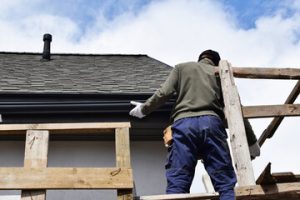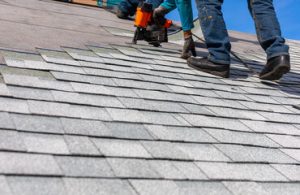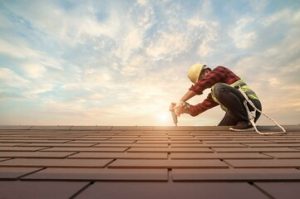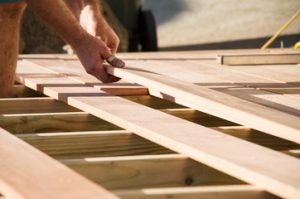Gutters are crucial for shedding rainwater, keeping your home’s foundation and landscaping safe from water damage. The right gutters also divert excess water away from the foundation to avoid rot and cracks in the basement.

Gutter Installation Gainesville FL is not a job that can be completed quickly, and there are many factors that affect the timeline. Understanding the complexities of this process allows homeowners to be prepared.
The gutter installation process can be complex, requiring precise measurements and careful attention to detail. Homeowners must consider factors such as the size of their roof, the type of materials used for their gutter system, and other external elements that may impact the timeline. In order to navigate these variables effectively, homeowners must foster open communication with their installers to set realistic expectations.
Gutter systems are essential for ensuring that water flows away from the house, protecting the foundation and preventing water damage. However, improper installation can cause clogs and leaks that can compromise the integrity of the roof and foundation. This is why it’s important to hire a professional for your gutter installation project. Professionals are trained to ensure proper sloping and fastening, which minimizes sagging and leaks. They also offer warranties on their work and materials, offering peace of mind for homeowners.
Before installing your gutters, start by familiarizing yourself with the local building codes and regulations for your area. This step will help you avoid costly fines and forced changes in the future. It will also ensure that your gutters are designed and installed to accommodate your specific weather conditions.
Next, gather the tools and supplies you’ll need for the job. Having everything ready and within reach will make the process go faster. Additionally, be sure to select a clear day to work. Working in the wind or rain can be difficult and dangerous, and will slow down the process significantly.
Once you’re prepared to begin, mark the layout lines on your roofline with a pencil. This will indicate where the brackets should be mounted. It’s best to install these along the entire gutter run, and to keep them spaced at least 3 feet apart to ensure adequate support. When mounting the brackets, it’s important to check their stability with a level and ensure that they are properly aligned with the slope marks that were previously made.
Once the brackets are secure, you can begin installing your gutters. Using your chalk line as a guide, measure and cut the gutters to the appropriate lengths, and then attach them to the brackets with stainless steel screws. Be sure to install elbows and downspout extensions at the ends of your gutters to ensure that the water flows through them smoothly.
Materials
Gutter systems are an essential component of a home, protecting against water damage and other outdoor elements. They direct the flow of rainwater away from the house, keeping it from seeping through the roof or causing structural damage. However, choosing the right gutter material can impact their longevity, aesthetics, and pricing. Moreover, the way the gutter system is installed impacts how well it works. Taking the time to properly prepare for gutter installation ensures that homeowners can enjoy hassle-free performance and protection for years to come.
The first step in the process is selecting the materials for your gutters. Several options are available, including aluminum, galvanized steel, copper, and stainless steel. Each option has advantages and disadvantages that should be considered based on your specific needs, budget, and location.
Once the gutter material is selected, it’s time to begin the actual installation. Start by marking the slope on the fascia boards. Use a drill to attach the gutter brackets, spaced every three feet or so. Make sure that they’re lined up with the slope marked earlier to enable efficient water flow.
Next, connect the gutters to the downspouts using end caps and elbow joints. These angled pieces help guide the flow of rainwater and keep it from clogging with debris.
In many traditional gutter systems, sections are connected together via seams. While this method is easy to install, it creates vulnerabilities for the gutter system. Leaks are more likely to develop at the seams, while twigs and leaves can easily get caught up in them.
Another important step is ensuring that the downspouts are directed away from the foundation of your home. Water that isn’t properly redirected can weaken the foundation and even cause it to crack. To prevent this from happening, add downspout extenders to your gutters or purchase a rain barrel to collect and store the excess water.
Timeline
Gutter replacement is a time-consuming endeavor, and homeowners should recognize that the timeline for this project is influenced by various factors. The size of the home, incline of the roofline, and prevailing weather conditions all contribute to the overall duration of the gutter installation process.
The first step in the process is a thorough inspection of the existing gutters and fascia boards to assess the condition of the roof structure and address any potential underlying issues that need to be addressed prior to the start of new gutter installation. Once the inspector has completed this phase, the team can begin removing the old gutters and installing the new ones.
This step can be accelerated with the use of a crane. However, a crane is not always available and may increase the overall cost of the project. Similarly, the installation of the downspouts can be a lengthy process, especially if they require custom cutting or are made of a more complicated material. The type of gutter system also plays a significant role in the installation timeline. Seamless gutters are generally faster to install than traditional sectional gutters. The complexity of the roofline can also affect the overall timing of the gutter replacement project, as homes with dormers or high roofs often take longer to measure and fit.
A professional approach to gutter replacement ensures that each phase—from the careful removal of old gutters to the precise installation of the new system—is executed efficiently and thoroughly. This enables the system to operate optimally, protecting the roof and directing rainwater away from the foundation.
Additionally, working with a local contractor familiar with the Pittsburgh climate and unique architectural styles can help to speed up the process. Homeowners should choose a roofing company that prioritizes customer satisfaction, as this can help to mitigate installation delays caused by unexpected weather events or other external factors.
In addition, establishing realistic expectations for the gutter replacement timeline can save homeowners time and money. Ultimately, prompt replacement of a poorly performing gutter system can prevent damage and expensive structural issues and protect the home’s value.
Safety
As with any home improvement project, safety is key. It’s important to always wear proper protective equipment, including gloves and eye protection, when installing gutters. In addition, it’s essential to use a ladder that is appropriate for the job and to follow ladder safety guidelines. These steps help to reduce the risk of injury and prevent costly repair issues down the road.
Proper measurements are also a crucial aspect of gutter installation. Taking the time to measure accurately allows for precise cuts and alignment, which reduces error during installation. Additionally, it ensures that the gutter system is properly fitted to your roofline and home’s foundation. This minimizes downspout and gutter clogs, which may lead to costly leaks.
When it comes to choosing gutter material, homeowners have many options to consider. Some are more durable than others, and some offer better climate compatibility or meet local regulations. In addition, some are easier to clean and are more resistant to damage from ice and heavy snow loads.
A quality gutter system is a great investment for your home. Its primary function is to drain water from the roofline, which is important in protecting your home’s shingles and fascia. It also helps to protect your house from rot, mildew, mold, and structural damage. In addition, gutters can reduce the risk of basement flooding from backed-up rainwater.
Gutter installation should be completed by professional contractors to ensure the work is performed correctly and safely. Professionals have the experience and tools to navigate challenges such as complex roof structures or difficult weather conditions. In addition, they are knowledgeable about local building codes and can advise you on the best gutter materials for your property. In addition, their work is backed by warranties to provide peace of mind. A faulty gutter system is a major headache for any homeowner. It can result in leaks, rot, shingle damage, and even water-related health problems. However, regular maintenance and inspections can reduce the likelihood of these issues and extend the lifespan of your gutter system. The most effective way to maintain your gutters is to remove debris regularly and keep them clear of clogs.





